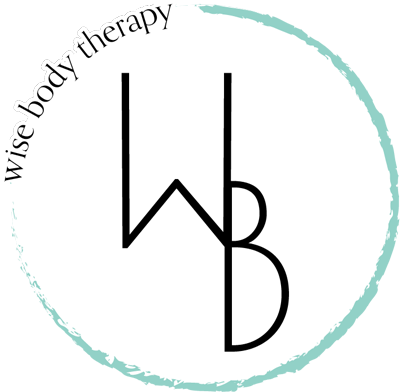Trauma Bonds: Why You Stay, and How to Heal

Trauma bonds are strong emotional attachments formed through repeated cycles of connection and pain, often rooted in early attachment wounds. These relationships can feel intense, magnetic, and deeply confusing—especially when moments of tenderness are followed by behaviors that cause harm.
I get it. You think:
- “Maybe it’s not that bad.”
- “He is my soul mate.”
- “They didn’t mean to hurt me—they just have their own wounds.”
- “If I just communicate better, things will change.”
- “There has to be something I can do to fix this.”
- “Plus, I’ve never felt this way with anyone else before. It has to mean something.”
- “No one understands me the way they do.”
- “I don’t want to give up on them—or on us.”
I’ve been there. These thoughts are rooted in hope, empathy, and a deep desire to make it work. These thoughts are also part of what makes trauma bonds so confusing and painful. Let’s walk through this together. There’s a way through.
By the end of this blog, you will know:
- Why we’re drawn to repeat painful patterns in relationships
- How trauma bonds begin and why they’re so hard to recognize
- The subtle signs of self-abandonment in trauma-bonded dynamic
- What it takes to heal—either within the relationship or by walking away
- How to recognize when a relationship has the potential for growth—and when it may be time to go
The Illusive Nature of Trauma Bonds
One of the most perplexing things about trauma is the way the painful patterns repeat. The psyche often gravitates toward situations that echo old wounds—not because we want to suffer, but because on some subconscious level, the mind is trying to resolve what never got resolved. It’s like the nervous system is searching for closure, hoping to finally say, “Okay, I’m done with this now.”
Trauma disrupts the body’s ability to process what happened. It’s as if the experience gets frozen in time, lost in a kind of nervous system purgatory. That’s the heart of trauma bonding: the way unresolved pain gets reactivated in relationships that mimic the original wound.
Trauma Bonds and the Subtle Start of Self-Abandonment
Trauma bonding often begins subtly. A person who initially seems safe, even stabilizing, slowly becomes the center of one’s world. These bonds begin as a deep feeling of emotional and physical connection. This early intensity is sometimes called ‘love bombing.
The perceived connection to this other can quickly escalate into a pattern of self-abandonment. Routines once rooted in self-care, like yoga, community engagement, or creative expression, begin to fade. Not because the person doesn’t care about those things anymore, but because their focus subconsciously shifts to prioritize staying connected to their person.
Red Flags, Rationalized
In trauma bonds, we might ignore red flags to preserve the illusion of connection and safety. A partner might withdraw affection, withhold communication, engage in secretive or harmful behaviors, or behave in controlling, and sometimes aggressive ways. When you express concern, your partner may minimize your pain or gaslight you.
We tend to overlook disturbing behaviors because they frequently follow a period of intense emotional, physical or intellectual intimacy. When one partner does things that hurt the relationship, they may be overlooked because they activate profound attachment wounds. The nervous system often responds not with clarity, but with a desperate longing to return to the earlier “safe” version of the person.
The nervous system sort of thinks familiar and safe are the same thing. But they’re not. Something can, obviously, be familiar and not safe. For example, if unpredictability, hypervigilance, or emotional highs and lows were part of early attachment, the body may interpret those sensations as love. The reward and survival systems in the brain keeps us clinging to hope, even when part of us knows something isn’t right.
This is why willpower alone often isn’t enough. Our inner alarm systems are calibrated by past experiences. To interrupt the cycle, we need more than insight—we need to create new felt experiences of safety, consistency, and connection. That’s how the nervous system learns something new.
The Path to Healing the Pattern Behind a Trauma Bonds
Remember, the psyche gravitates toward situations that echo old wounds, in an attempt to find closure. Here’s the catch: we can’t complete that loop unless we bring consciousness to it. Otherwise, we stay trapped in repetition. Healing is possible. It starts by recognizing the patterns, validating the pain, and slowly reconnecting with the inner wisdom that may have been buried beneath years of survival.
Does the Relationship Need to End to Heal?
The answer is no—not always.
Trauma bonds don’t automatically mean a relationship is doomed. Sometimes, they are a gift that shows both people their unconscious patterns. If both partners are willing to do the deep, uncomfortable work—naming the wounds, creating safety, setting boundaries, and owning their part—healing is possible within the relationship.
But this requires more than good intentions. It means bringing serious awareness to how old attachment wounds are resurfacing, and how those wounds shape behaviors, expectations, and emotional reactions. It means both people are willing to slow down when triggered, speak with honesty rather than defensiveness, and make space for the other person’s pain without collapsing into shame or blame.
Healing within a trauma-bonded relationship is possible when both people:
- Take accountability for their patterns without deflecting or denying.
- Create enough safety for honesty to exist without fear of punishment or abandonment.
- Stay open to therapy, support, and structured repair—not just spontaneous promises of change.
- Are committed not just to staying together, but to transforming how they relate.
Some of the most resilient relationships are built not on perfection, but on the mutual commitment to recognize harm and do better—together.
It May Be Time to Go
Not all trauma bonds can be transformed. Sometimes, the clearest act of self-love is choosing to leave.
It may be time to go if one person:
- Repeatedly minimizes, dismisses, or gaslights your concerns.
- Cannot or will not acknowledge their contribution to the harmful dynamics.
- Uses defensiveness, avoidance, or blame to shut down conversations about change.
- Refuses to seek support or take consistent steps toward growth.
- Makes you feel more anxious, confused, or unsafe than secure and supported.
- Demands you shrink, silence, or abandon yourself to stay connected.
If only one person is doing the emotional labor to maintain the relationship, it’s not a partnership—it’s a pattern. Leaving doesn’t mean the relationship never mattered. It means you’ve recognized that love without safety isn’t sustainable. It means honoring your capacity for connection without abandoning your need for clarity, honesty, and healing.
What Healing Can Feel Like
Healing doesn’t always look like a big, dramatic moment. It might look like:
- Saying no without over-explaining
- Crying and letting the tears mean something real
- Reaching out to a safe friend
- Noticing red flags sooner than you used to
- Feeling a flicker of relief when you choose yourself

Softening Sessions
Softening Session
Pause and ask yourself:
- What parts of me feel soothed by this connection?
- What parts feel abandoned?
Healing begins with noticing—without judgment—what your body already knows.
If you like this blog about trauma, you may also enjoy:
And, I’m writing a book called Softening the Shadows about breaking free from internalized control and reclaiming intuitive wisdom after being shaped by others’ emotional needs.






